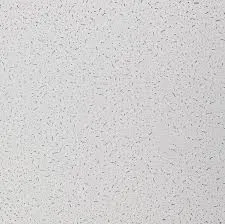Nov . 01, 2024 05:21 Back to list
PVC Gypsum Board Advantages and Applications for Modern Construction Needs
Exploring the Benefits of PVC Gypsum Board
PVC gypsum board has emerged as a popular choice in the construction and interior design industries due to its unique combination of properties and advantages. This innovative building material integrates the strength of gypsum with the versatility of polyvinyl chloride (PVC), making it a go-to option for many architects, builders, and homeowners. This article delves into the benefits of PVC gypsum board, highlighting its features, applications, and overall appeal in modern construction.
What is PVC Gypsum Board?
PVC gypsum board is a composite material that consists of a gypsum core surrounded by a layer of PVC film. This combination enhances the board's durability while providing a smooth, aesthetically pleasing surface. The use of PVC not only protects the gypsum core from moisture and damage but also offers a variety of design options, including different colors and textures.
Key Advantages
1. Water Resistance One of the primary benefits of PVC gypsum board is its resistance to water. Traditional gypsum board is prone to damage in moist environments; however, the PVC layer acts as a barrier, preventing water from penetrating and reducing the risk of mold and mildew growth. This makes it an excellent choice for areas like bathrooms, kitchens, and basements.
2. Lightweight and Easy to Install PVC gypsum boards are lightweight compared to conventional drywall, which makes them easier to handle and install. This characteristic reduces labor costs and time, allowing for quicker project completion. Their ease of installation also means that they can be easily cut and shaped to fit various architectural designs.
pvc gypsum board

3. Aesthetic Versatility The PVC finish comes in a multitude of colors and designs, allowing for creative expression in interior spaces. Whether it's a modern office environment or a cozy home setting, PVC gypsum boards can be tailored to fit any decor style, enhancing the overall appearance of the space.
4. Durability These boards are resistant to impact, making them ideal for high-traffic areas. Unlike traditional plasterboard, they are less likely to chip or crack, ensuring that the walls remain intact despite everyday wear and tear.
5. Cost-Effective Although the initial investment might be higher than traditional gypsum board, the long-term benefits of PVC gypsum board often lead to overall cost savings. Its durability and moisture resistance reduce maintenance costs, while its aesthetic appeal can increase property value.
Applications
PVC gypsum boards are suitable for various applications, including residential, commercial, and industrial projects. They can be used for ceilings, wall paneling, and partitioning, enabling designers to create versatile and functional spaces. Their resistance to moisture also makes them ideal for kitchens and bathrooms, where water exposure is common.
Conclusion
In summary, PVC gypsum board stands out as an innovative building material that combines functional benefits with aesthetic appeal. Its water resistance, durability, lightweight nature, and design versatility make it an excellent choice for a wide range of applications. As the construction industry continues to evolve, materials like PVC gypsum board are paving the way for more efficient and attractive building solutions. Whether for a new project or renovation, PVC gypsum board is an investment worth considering.
-
Quality Ceiling Trap Doors & Access Panels | Easy & Secure AccessNewsAug.30,2025
-
Durable Ceiling T Grid Systems | Easy InstallationNewsAug.29,2025
-
PVC Gypsum Ceiling: Durable, Laminated Tiles for Modern SpacesNewsAug.28,2025
-
Pvc Gypsum Ceiling Is DurableNewsAug.21,2025
-
Mineral Fiber Board Is DurableNewsAug.21,2025
-
Ceiling Tile Clip Reusable DesignNewsAug.21,2025







